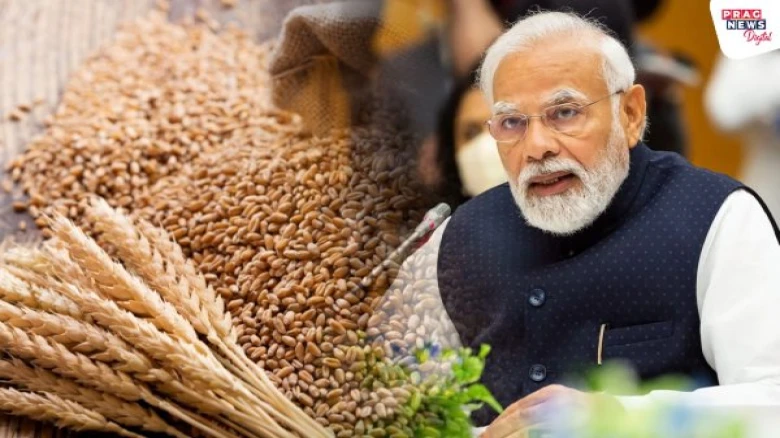Food Corporation of India reports that wheat inflation is running at close to 12%.
Digital Desk: Less than four months after Prime Minister Narendra Modi boldly declared that India was prepared to "feed the world" in the aftermath of Russia's invasion of Ukraine, the government must explore grain imports.
The impact of this year's record-breaking heat wave, which began in March, impacted Indian wheat output, resulting in reduced output and higher local prices. They increased the cost of living for hundreds of millions of Indians by utilizing wheat to manufacture staple meals such as naan and chapatis.
Because a large wheat harvest was not going to happen, the government limited exports in mid-May.
According to the Food Corporation of India, reserves fell in August to their lowest level in 14 years, while wheat inflation is close to 12%.
With the current situation existing – imminent shortage and soaring costs – authorities are considering purchasing wheat from abroad.
According to the article, officials are debating whether to reduce or eliminate a 40% import tax on wheat to assist flour millers in specific regions in importing grain.
"Given that much of the war risk premium has been removed from global wheat prices, India may consider increasing its local wheat supply through imports. However, because domestic wholesale wheat prices are lower than global prices, import taxes must be reduced to make it a viable choice " quoted Sonal Varma, an analyst at Nomura Holdings Inc.
According to officials, the 2021-22 wheat harvest will be around 107 million tonnes, down from a February projection of 111 million. Traders and flour millers, on the other hand, predict 98 million to 102 million tonnes.
According to the food ministry, government wheat imports are likely to be less than half of what they were in 2021.
Meanwhile, consumer wheat inflation increased to 11.7% in July, while wholesale prices increased even higher, by 13.6%, according to official figures.
Though wheat is India's largest winter crop, concerns over rice output may rise as the next issue to world food security.








Leave A Comment